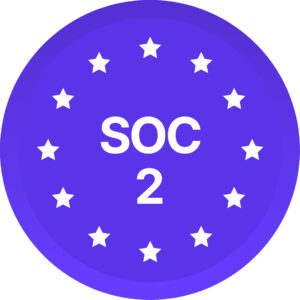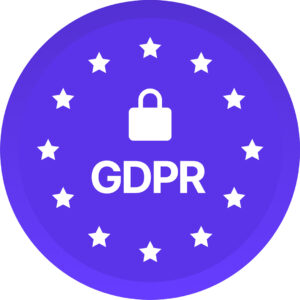Diversity, equity, and inclusion (DEI) initiatives are essential for fostering a fair and equitable workplace. However, shifting political landscapes—particularly the recent Executive Orders under the Trump administration— have intensified scrutiny around DEI programs. Companies must now be more strategic to avoid political backlash, legal risks, and reputational damages.
In this blog, we’ll outline some of the most common DEI programs, identify which ones are the most controversial, and provide tactical suggestions for mitigating risks. Additionally, we’ll explore “safe” DEI initiatives under the Trump Administration’s Executive Orders, helping organizations ensure they stay compliant while continuing their DEI efforts.
Importantly, this blog article should not replace legal advice. Diversio’s knowledge resource library is intended for educational purposes only and should replace a lawyer’s guidance. Readers should consult legal counsel if they have concerns regarding their DEI programs. Diversio can support clients through this process.
Common DEI programs & policies & how to de-risk them
- Hiring quotas & affirmative action
Hiring quotas or affirmative action policies aim to ensure that certain demographic groups (such as women, racial minorities, or individuals with disabilities) are hired at a proportional rate to their representation in the broader population.
The risk
Under the Trump administration, Executive Orders have labeled quotas and race/gender-based hiring preferences as “illegal” and “immoral.”
De-Risking Tactics:
- Focus on business outcomes: Rather than setting quotas, emphasize diversity as a tool for improving business outcomes, such as innovation and productivity. Reframe DEI programs to focus on skill-building and employee potential, rather than quotas tied to race or gender.
- Metrics-driven approach: Shift from setting rigid hiring quotas to tracking diversity metrics across multiple dimensions (gender, ethnicity, experience, etc.) and using this data to make informed decisions on recruitment and promotions. Avoid tying these metrics to specific targets or quotas, but instead, focus on building a diverse talent pipeline through outreach and inclusive hiring practices.
- Employee resource groups (ERGs)
ERGs are voluntary, employee-led groups that focus on supporting and advocating for underrepresented employees within an organization (e.g., women’s networks, LGBTQ+ groups, racial or ethnic identity groups).
The risk
While ERGs can be a great way to build community, some see them as divisive, especially in organizations where employees from different backgrounds don’t feel represented. Under the Trump administration’s Executive Orders, ERGs that focus on racial or gender identity have come under scrutiny.
De-risking tactics:
- Shift Focus to Professional Development: Reframe ERGs as professional development networks or leadership development groups, where individuals of all backgrounds can learn from one another. This reduces the potential perception of division and increases the broader appeal of these groups.
- Ensure Open Access: Ensure that participation in ERGs is open to all employees, regardless of identity, to avoid any perception of exclusion or bias.
- Unconscious bias training
Unconscious bias training aims to help employees recognize and address their implicit biases, especially those related to race, gender, and other protected characteristics, to foster a more inclusive workplace.
The risk
Unconscious bias training has been criticized for its effectiveness (or lack thereof) in changing behaviors, and it’s become politically charged, particularly under the Trump administration. Executive Orders have specifically targeted training programs that promote concepts such as privilege, systemic racism, or identity-based training.
De-risking tactics:
- Focus on skills & leadership development: Instead of focusing solely on bias, pivot the training to include leadership skills, emotional intelligence, and communication strategies to work with diverse teams. This broadens the training’s appeal and emphasizes business benefits rather than focusing on race or gender bias.
- Opt for voluntary training: Position bias training as optional for those who want to improve their leadership or team dynamics, rather than mandatory, to minimize backlash.
- Pay equity audits
Pay equity audits examine whether employees are paid fairly across gender, race, and other demographics, aiming to identify and address pay disparities.
The risk
Pay equity audits are generally seen as less controversial, as they directly address fair pay practices. However, the results can sometimes be uncomfortable, especially if disparities are found. Some critics argue that these audits are “identity-based” and contribute to the politicization of workplace pay.
De-risking tactics:
- Frame as business imperative: Emphasize that pay equity audits help ensure the company attracts and retains top talent by offering competitive and fair compensation. Instead of focusing solely on race or gender, include experience and job performance metrics as part of the audit.
- Ensure transparency: Clearly communicate the company’s commitment to pay equity across all employee groups and that the audit is part of an ongoing effort to retain talent and improve the business.
- Diversity & Inclusion (D&I) Reporting
Many companies now track and report on their diversity metrics, including gender, racial, and ethnic diversity across different departments and levels of the organization.
The risk
While reporting diversity metrics is seen as a positive step in ensuring accountability, companies fear backlash if reports reveal low diversity or slow progress. Recent Executive Orders discourage diversity targets that could be viewed as “reverse discrimination.”
De-risking tactic:
- Use metrics for continuous improvement, not compliance: Position diversity reporting as part of a broader strategy to track continuous improvement. Avoid rigid diversity targets and instead use metrics to monitor trends, identify areas for improvement, and ensure long-term cultural shifts.
- Balance with business metrics: Combine diversity metrics with other business performance indicators (such as employee engagement or retention rates) to show that your company’s commitment to DEI is aligned with business goals.
“Safest” DEI programs under the Trump administration’s executive orders
While certain DEI programs are more politically and legally risky under the Trump administration’s executive orders, there are others that are considered “safer” and less likely to attract scrutiny. These programs focus on creating inclusive, supportive work environments, without directly addressing race or gender-based quotas or training.
- Workplace safety & harassment prevention
- Why it’s safe: Programs that focus on maintaining a safe, harassment-free workplace are legally required under federal law and are not controversial. These include training on workplace behavior, anti-harassment policies, and establishing reporting mechanisms.
- Tactic: Ensure these programs emphasize respect, compliance with legal requirements, and the well-being of all employees.
- Skills-based development programs
- Why it’s safe: Programs focusing on skills development (e.g., leadership, communication, project management, and technical skills, like artificial intelligence) are universally beneficial and do not focus on identity-based diversity.
- Tactic: Position your development programs as tools for overall workforce optimization and professional growth, which benefits employees of all backgrounds.
- Cultural awareness & inclusion programs
- Why it’s safe: Initiatives that promote broad cultural competence (e.g., team-building, cross-cultural communication) can be effective without focusing specifically on identity-based issues like race or gender.
- Tactic: Emphasize inclusion as a company value that promotes collaboration and innovation, rather than focusing solely on identity groups.
- Flexible work and work-life balance programs
- Why it’s safe: Programs that focus on work-life balance (e.g., flexible hours, remote work) and overall employee well-being are universally accepted and are not controversial.
- Tactic: Frame these programs as part of your company’s commitment to employee satisfaction, mental health, and work-life balance, making them appealing to all workers.
Conclusion: Striking the Right Balance
As the DEI landscape continues to evolve, companies must be strategic in how they implement and communicate their diversity initiatives. By de-risking potentially controversial DEI programs and focusing on inclusive and business-aligned practices, organizations can maintain their commitment to diversity and inclusion while minimizing legal, political, and reputational risks.
How Diversio Can Help:
Diversio provides data-driven insights and strategies to help organizations optimize their DEI efforts while staying compliant with evolving political and legal landscapes. Whether you’re focusing on employee development, creating inclusive programs, or ensuring workplace safety, Diversio can help guide your organization toward a sustainable and inclusive future.

